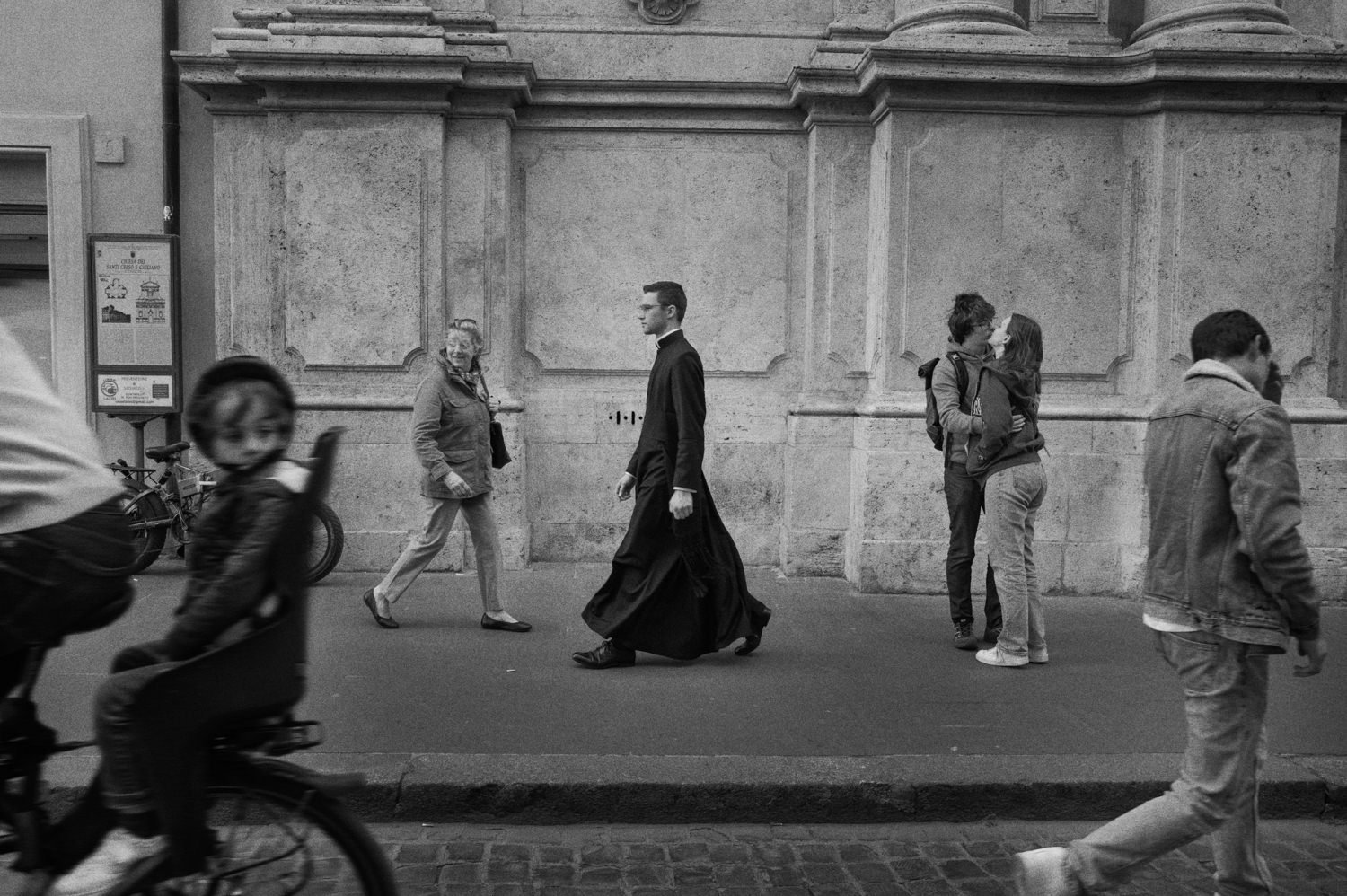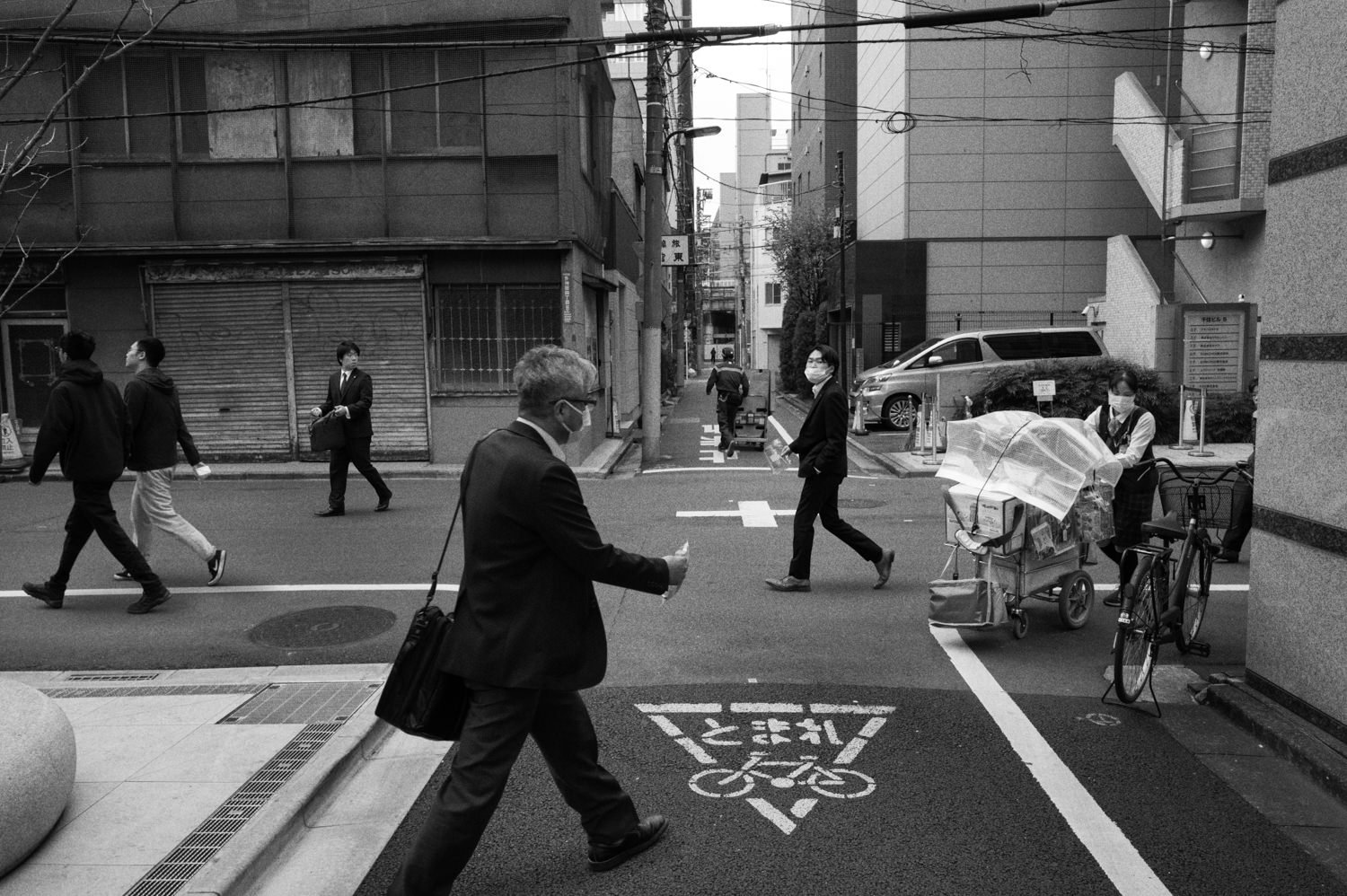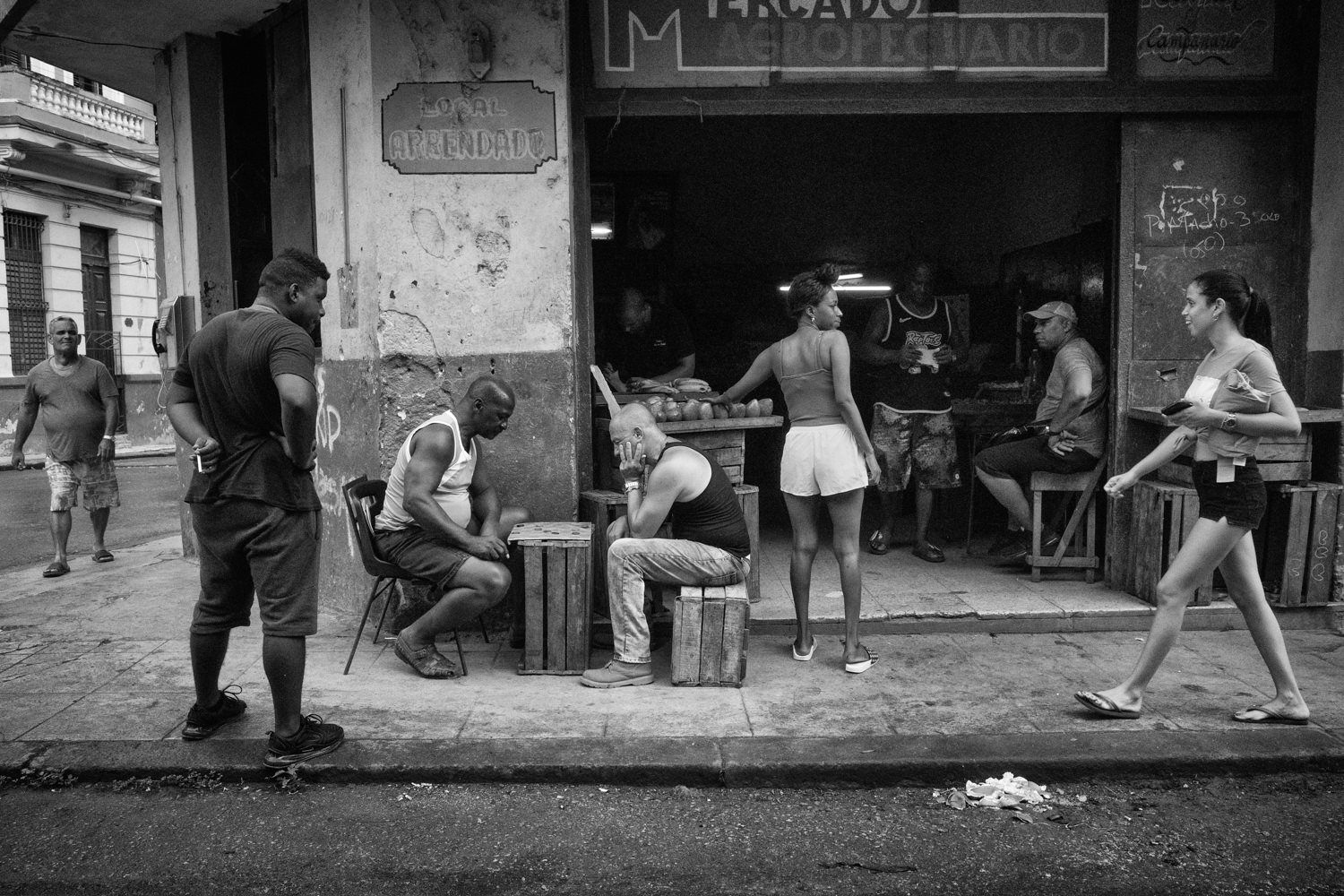Over the years, I've taken the liberty of naming a genre of street photography that I love to create. Drawing inspiration from the world of music, I've called these photographs "Ensembles".
The "ensembles" aim to capture the essence of human complexity and daily life through a harmonious arrangement of subjects within a single frame. The goal is to create images that are more than just a sum of parts, but rather a visual symphony of distinct elements. At the heart of this practice lies the ability to observe and capture fleeting moments of harmony and formal balance within the chaos of reality.
Rome, 2024 \\ Leica Q3
Each subject in an ensemble has its own vertical graphic space, which is fundamental to creating a sense of order and structure in the overall image. These individual spaces allow each subject to emerge clearly and distinctively, while the general arrangement of elements within the frame creates a visual and narrative connection between them.
Through these ensembles, I strive to celebrate the diversity and complexity of the world around us, evoking the poetry of the ordinary by finding a harmonious balance amidst the daily tumult. It's an invitation to slow down and observe the world with new eyes, in search of those special moments when beauty and balance emerge from chaos.
Tokyo, 2024 \\ Leica Q3
Creating successful ensemble photographs requires a combination of artistic vision and technical skill. Patience is paramount - waiting for the right moment when all elements align can take considerable time. This patience extends beyond just waiting for subjects to move into position, but also for the right lighting conditions and other environmental factors to come together.
Finding the right location with potential is crucial. This involves identifying spaces that offer interesting backgrounds, good light, and natural paths for subject movement. The ideal location should provide opportunities for multiple subjects to interact within the frame in visually interesting ways.
Rome, 2022 \\ Leica Q3
It's essential to verify not just the positioning of the subjects, but also their relationship with the background. The background should be well-balanced and compositionally strong even in the absence of subjects. This creates a solid foundation for the ensemble and ensures that every part of the frame contributes to the overall image.
Technically, wide-angle lenses are often the tool of choice for this style. I typically use 28mm, 24mm, and 21mm lenses. These focal lengths allow for a broader field of view, making it possible to include multiple subjects and their environment in a single frame. They also create a sense of depth and scale that can enhance the relationship between subjects and their surroundings.
Havana, 2020 \\ Leica Q2
With extensive experience, I've developed the ability to recognize potential patterns and compositions as they're forming. This skill allows me to anticipate and prepare for moments before they fully materialize, increasing my chances of capturing the perfect ensemble.
While skill, patience, and preparation are fundamental, a touch of luck can indeed be the final ingredient in capturing an exceptional ensemble photograph. Sometimes, unforeseen elements come together in ways that couldn't have been planned, creating truly magical moments.
Budapest, 2024 \\ Leica Q3
This approach to photography challenges both the photographer and the viewer to engage more deeply with the image, inviting exploration of the relationships between different elements and discovery of the story being told through the careful arrangement of subjects. It's a meditation on the interconnectedness of life and the beauty that can be found in the most ordinary of moments when viewed through a thoughtful and artistic lens.
Have a look to the Ensemble Gallery: https://www.walkingphotographer.net/ensemble





